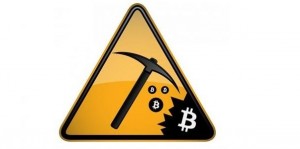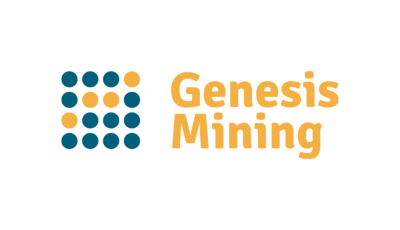Basic Mechanics: Mining and the BTCUSD Price
 In light of the recent BTCUSD price declines – particularly from the mid-$500s to where we sit now, in the upper 300s – there has been endless discussion of those dastardly miners and their brilliant plot to suppress the price of Bitcoin by mining and then selling them. Darn those miners.
In light of the recent BTCUSD price declines – particularly from the mid-$500s to where we sit now, in the upper 300s – there has been endless discussion of those dastardly miners and their brilliant plot to suppress the price of Bitcoin by mining and then selling them. Darn those miners.
Inevitably, in every discussion of this, the same lines are trotted out by those participating in the conversation:
“The price going lower is making miners sell more to cover the price of their mining rigs!” tweets one parrot. You read it and think, “Well, of course. That only makes sense – they have to sell more coins if they want to make the same amount of money as before and the price per coin is now lower.” And you’re right – but that’s not the entire story. It never is, really. But it is a part of the basics of mining – sort of. Not all miners are the same.
To begin with, consider that there are essentially three types of miners.
The first type is made up of hobbyists and ideologues. This group mines coins either for the good of the network – mining power is best kept decentralized – and in order to generate Bitcoins, which they see as preferable to fiat currencies. These miners are unlikely to be selling a lot of their coins regardless of the exchange rate. So they’re not the dastardly miners we’re looking for.
The second group is cloud miners – those with a financial interest in mining. These sorts rent out mining via contracts purchased on or off-exchange. But do they sell their coins? Perhaps – but the price of Bitcoin (in dollars) is likely not something they care all that much about. Why? They have no overhead – they’re not running machines themselves which cost electricity. In addition, they likely purchased the contracts in Bitcoin – and their contracts are likely still valued in Bitcoin. So yes, this group does likely sell Bitcoin for dollars – but they’re really not the dastardly miners we’re looking for.
The third group is mining businesses or major personal miners. These are the people and corporations that go out and buy up a bunch of the more pricey miners, newly released onto the market, and set them loose to go hashing. The members of this group may even – if they have enough capital to throw around – have gone out and commissioned an entirely new breed of miner just for their purposes. These ARE the dastardly miners you’re looking for – but they’re probably also thinking about their actions more carefully than those discussing their actions are. The members of this group are likely Bitcoin believers – why else would they invest such a huge amount into this hardware – so they don’t WANT to sell more coins than they have to. They also likely paid for their machines up front. So really they need to sell coins to cover operational costs – in the case of mining equipment on a large scale, this means electricity, maintenance, and perhaps a limited expense on staff. Still, these are the people dumping coins. But even they want to be as reserved about it as possible.
So of those groups, none of them really wants to sell more coins than they have to. What else could be at play here?
“Changes in the total network hash rate,” the parrots squawk, adding, “The hash rate going up means each miner is generating less coins, and so they have to sell a greater percentage of their earnings to get to break even!”
Wrong. Not entirely wrong, but literally wrong, and somewhat misguided.
The network hash rate is 100 MH/s, and you come along and bring online your new MEGAHASHOMATIC, adding 100 MH/s to the network hash rate. What happens?
Everyone keeps mining the same amount of coins. The average block time, on the other hand? That changes. To 5 minutes, instead of 10. The number of coins mined by a miner is a function of their personal hash rate and the network difficulty – they don’t have to care at all about the rest of the network. Except that the rest of the network’s activity will determine the next difficulty change.
So it’s wrong to say that an increased network hash rate immediately leads to reduced coin income. It doesn’t. It will lead to a greater difficulty increase, and therefore will also lead to a reduction in miner profitability – but only once the difficulty changes! Not before then! This is badly misunderstood by just about everyone – so go spread the word.
But changes in total network hash rate do matter to our third group up top. And that’s why they’re important to the price. That third group uses sophisticated analytics and measures out precise estimates for what they expect the next difficulty to be. So the change in network hash rate? That changes their prediction about the future difficulty – which in turn means they expect to be mining less coins in the future. The net result? They do really need to sell more coins in order to pay for their operation. Just not quite for the exact reasons everyone seems to think they do. And why people choose to do something is very often just as important as what it is they are doing.












